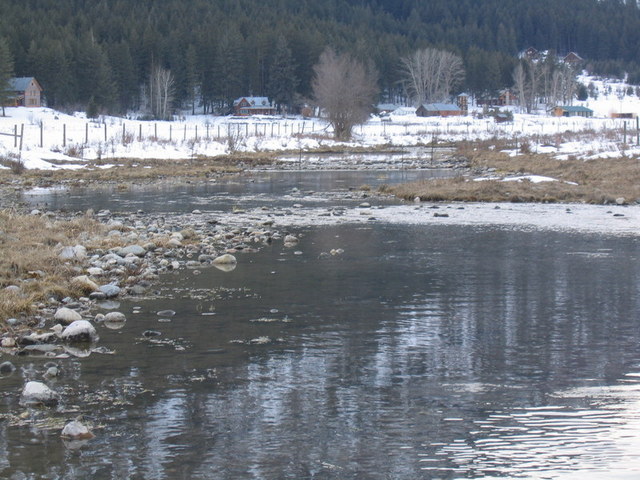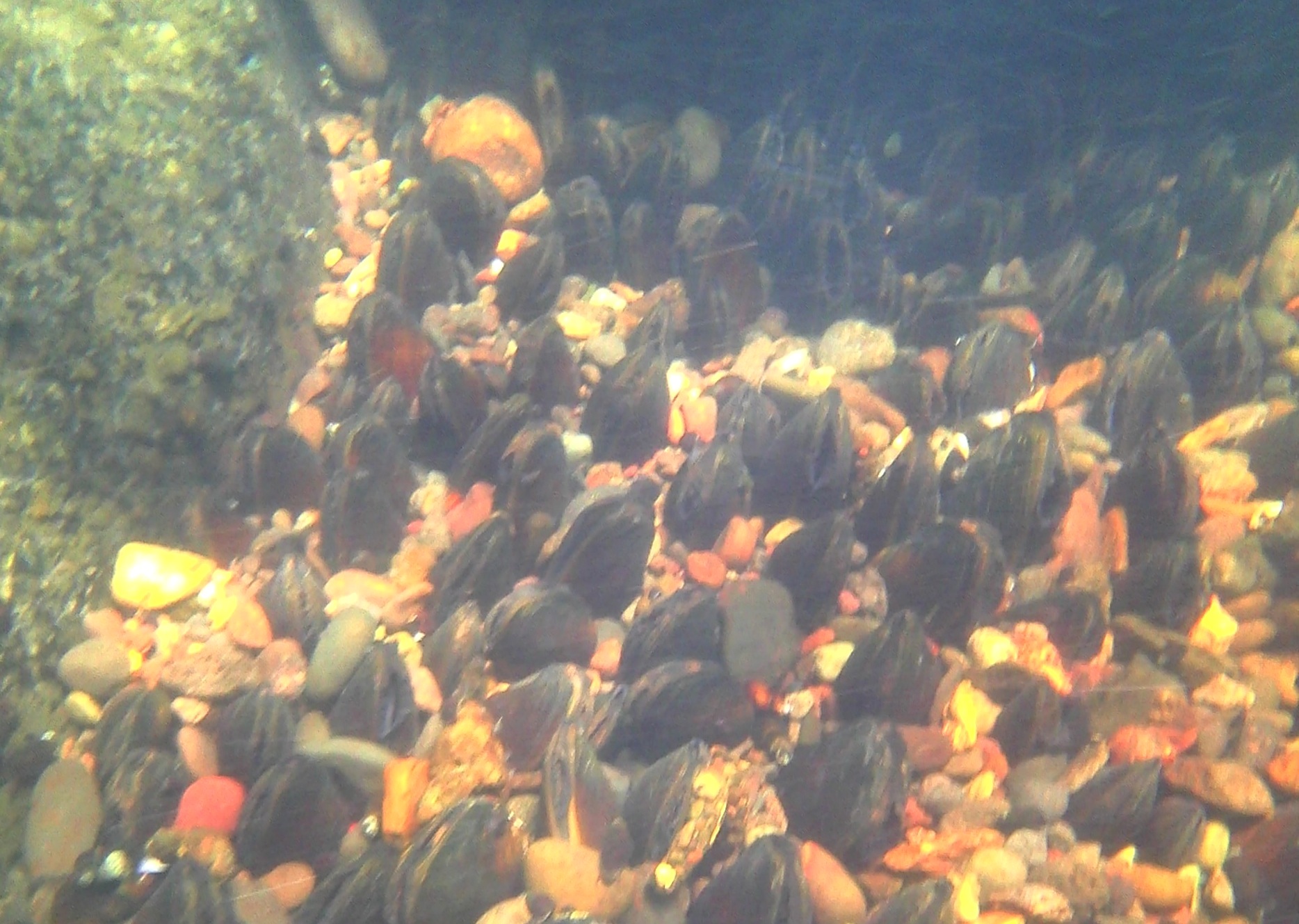Technical Recommendation 3
Watershed Restoration
Actively restore watersheds where salmon populations are in imminent danger of extinction. Use Coarse Screening Process to develop demonstration projects.
Note: The watershed restoration problem statement, hypothesis, and recommended actions made in the 1995 Spirit of the Salmon Plan remain relevant and applicable.
Current Status
The four tribes, along with agencies and local groups, are engaged in significant efforts to restore Columbia Basin watersheds and their stream systems. The tribal aim is watershed-wide habitat restoration to increase egg-to-smolt survival of Endangered Species Act (ESA)-listed and depressed populations and to help restore these populations to levels where both ESA viability criteria and the Spirit of the Salmon Plan goals and objectives are met. Active habitat restoration applied at the watershed, riparian zone, and stream channel scales is underway in areas where habitat is most damaged, including many portions of the Yakima, Clearwater, Grande Ronde, Umatilla, Salmon, Tucannon, Deschutes, Entiat, Wenatchee, Methow, and John Day rivers. Specific habitat restoration actions identified by subbasin in Volume II of the 1995 Spirit of the Salmon Plan were incorporated into 2004 subbasin plans and further developed in many subbasins in National Marine Fisheries Service (NMFS) recovery plans under the ESA. “Expert” subbasin panels familiar with site-specific limiting factors have highlighted current key restoration actions, although CRITFC suggests this qualitative approach be replaced by quantitative modeling based on monitoring data on fish and habitat condition.
After 150 years of human development and land use impacts, watershed restoration in the Columbia River Basin is still a giant work-in-progress. Substantial funds from the Bonneville Power Administration, the Pacific Coast Salmon Recovery Fund, and numerous other federal, state, tribal, public utility district and private sources are being expended for watershed restoration every year. Yet CRITFC and others estimate that hundreds of millions more dollars are needed annually for Columbia Basin watershed restoration, land protections, elimination of passage barriers, instream flows, water quality, program operations, monitoring, outreach and education, and regulatory actions (State of Washington 2011). Additional restoration funding is needed now otherwise rapidly occurring impacts from both climate change and continuing human development may undo gains already made. Read the sidebar “Is Watershed Degradation Outpacing Restoration?” in the update of the institutional recommendation, Watersheds.
Assessment
Active habitat restoration has sometimes occurred as opportunistic actions rather than as part of a comprehensive watershed-based program that addresses cumulative impacts to habitat conditions throughout salmon-bearing stream systems. The purpose of a comprehensive restoration program is to address all key limiting factors impairing the processes that create a sustainable fish production system. Restoration is most effective when conducted systemically and strategically.
Systemic action often involves reconnecting fragmented habitat to allow stream systems to support salmon and lamprey at different life history stages. This enables instream migration and occupation of multiple habitat types in multiple life history stages. Restoration principles that employ a holistic, ecosystem approach are more likely to be successful than fragmented, opportunistic, and single-species approaches. These principles are emphasized in the tribes’ use of the First Foods concept (see the Update’s Traditional Ecological Knowledge and Science and Jones et al. 2008).
In addition to active restoration, passive restoration is vital to success. While the benefits of passive restoration sometimes require a longer time horizon to become effective, the passive restoration approach is often far less expensive and avoids the risks of heavy machinery use in sensitive areas. Some examples of passive restoration include enforcing laws that restrict impacts and establishing riparian reserves, fencing, new land acquisitions and easements. Often, removing—or in the case of culverts, replacing—a continuing, spatially extensive source of impact is all that is needed to initiate recovery.
Due to the massive geographic scale of streams needing restoration, enforcement of effective laws that deal with forest and agricultural practices and non-point source impacts is essential to stream restoration. The most extensive land uses impairing streams are in the non-point source category. Basin management plans that implement passive restoration and reduce or remove key stressors to streams can limit the severity of negative impacts from climate change and current and future land uses. The 2013 Washington Supreme Court decision in Lemire v. State of Washington supporting the ability of Washington Department of Ecology to regulate non-point source pollution of streams subject to direct livestock impacts reveals that non-point source impacts may be controlled by the states, despite the weak regulatory language in the federal Clean Water Act.
Although a wide range of agencies collect a wide range of habitat data, intensive, coordinated monitoring and trend analysis is still in a rudimentary phase. Furthermore, monitoring in many watersheds is lagging or not being done comprehensively. The newer and still formative efforts include the Columbia Habitat Monitoring Program (CHaMP) run by NMFS and the Bonneville Power Administration; the Intensively Monitored Watershed (IMW) programs initiated by various consortia of agencies and tribes; the U.S. Forest Service’s effectiveness monitoring programs, PACFISH/INFISH Biological Opinion or PIBO and Aquatic and Riparian Effectiveness Monitoring Plan (AREMP); and the Integrated Status and Effectiveness Monitoring Program (ISEMP), which examines status and trends and multi-scale actions.
By monitoring representative stream reaches, entire stream systems, riparian areas and salmon-bearing watersheds, information is gained to assess the extent to which various restoration actions are addressing specific limiting factors or to assess the combined cumulative actions of all current and historic restoration projects. These factors control improvement in productivity, abundance, spatial distribution and genetic diversity (i.e., viability criteria) for entire salmon populations. These data can be used to develop models that land managers can then employ to predict potential habitat condition and population viability improvements from restoration actions. Because these intensive, comprehensive monitoring programs assess progress in representative damaged habitat for listed populations, they suggest progress in restoration of entire Evolutionarily Significant Units (ESUs) or the scale of restoration that would be needed in the watersheds supporting other populations in the ESU. However, this emphasizes the need to also conduct targeted implementation and effectiveness monitoring to local scale projects in other basins that are not part of intensive monitoring programs. Coordinated funding, management and data reporting from this type of monitoring program are needed.
New and Modified Actions
- Restore watersheds using active and passive restoration throughout the anadromous fish range and in watersheds contributing to anadromous fish habitat; when funding is limited, focus restoration where salmon and other native species are in imminent danger of extirpation. (Use Coarse Screening Process to develop demonstration projects. See Coarse Screening Tables 5B.2 and 5B.3.)
- Prioritize strategies for restoration of freshwater habitats supporting salmon populations or subpopulations and other anadromous species in the following order: 1) protect key watersheds or stream reaches with intact processes and high-quality habitat (potentially through the creation of reserves), 2) reconnect isolated high-quality habitat, 3) restore hydrologic, geologic (sediment delivery and routing), and riparian processes, and 4) conduct instream habitat enhancements. See Roni et al. (2002) and Beechie et al. (2010).
- Improve land use regulations to protect and restoration floodplains and wetlands, remove dikes and channel hardening and allow active channel migration.
- Incorporate a multispecies approach in setting restoration targets. For example, even restoration specifically targeted towards salmon should account for the biotic integrity of macroinvertebrates and non-game fishes that make up the food base and provide dependable indicators of watershed health. See Independent Scientific Advisory Board (2011), Beechie et al. (2008), Hubler (2009).
- Apply watershed and stream restoration actions at an intensity matching the needed rates of recovery. This may involve application of models linking land use and habitat response and habitat monitoring and decreasing the gap in restoration funding.
- Restore watershed-wide stream system integrity, including expanding the extent of restoration to more of the stream network and applying greater intensity to restoring upland watershed conditions. See Allen (2004), Roni et al. (2010).
- Adapt research and monitoring programs to identify key land use and salmon production interactions and reveal effective ways to improve watershed conditions. Promote measures known to be effective in instream habitat recovery. Provide quantitative evaluation of the magnitude of improvement and the rate of recovery of habitat quality and quantity and of associated benefits to salmon and lamprey survival and production. This will be essential in showing that cumulative habitat restoration actions are lessening the limiting factors impairing fish abundance, productivity, genetic diversity and spatial diversity, which are all expectations in Columbia Basin Accords agreements. (Also see the updated institutional recommendation Research, Monitoring and Evaluation.)
- Use McCullough and Espinosa 1996 and CHaMP 2012 in developing and refining necessary forms of monitoring.
- Develop and use more efficient processes to select the best restoration projects capable of producing the greatest benefits in the short and long terms, based on best available fish and habitat monitoring and life cycle productivity data plus comprehensive engineering analysis.
- Use emerging technologies, such as TIR evaluation of water temperature, LIDAR evaluation of riparian cover, hyperspectral analysis of terrestrial vegetation cover (vitality, species composition), real-time satellite-based reporting of water quality from monitoring stations, and GIS mapping technology, to create shared understanding and evaluation measures across jurisdictions.








